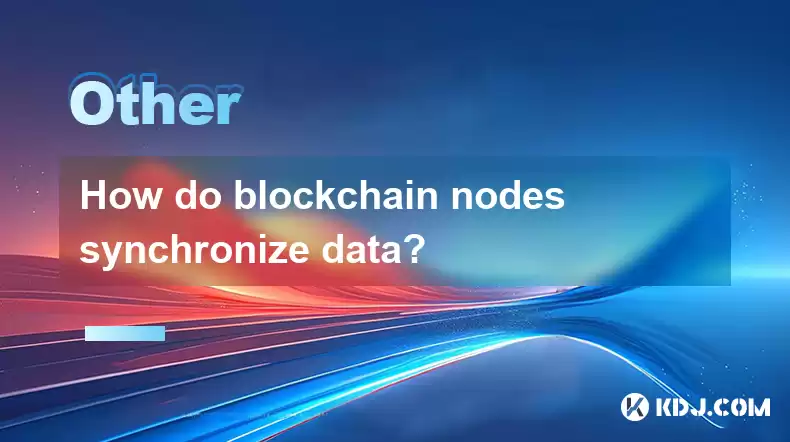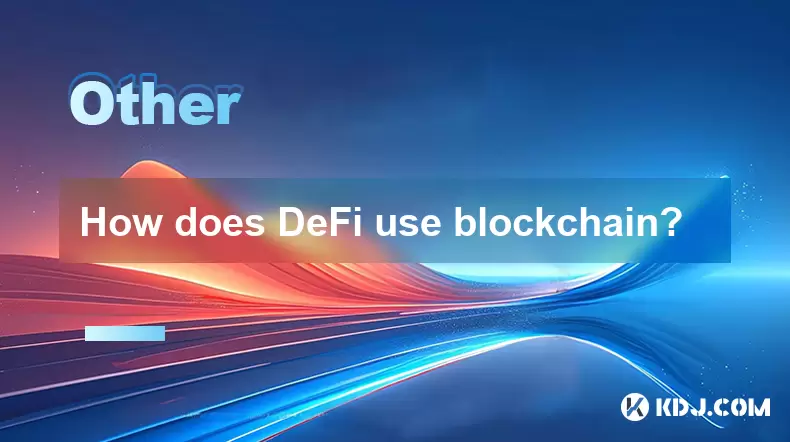-
 Bitcoin
Bitcoin $113700
0.66% -
 Ethereum
Ethereum $3471
-0.04% -
 XRP
XRP $2.885
-0.16% -
 Tether USDt
Tether USDt $1.000
0.05% -
 BNB
BNB $747.8
-0.10% -
 Solana
Solana $161.1
-0.98% -
 USDC
USDC $1.000
0.02% -
 TRON
TRON $0.3255
-0.22% -
 Dogecoin
Dogecoin $0.1980
1.46% -
 Cardano
Cardano $0.7237
2.87% -
 Hyperliquid
Hyperliquid $37.79
0.87% -
 Stellar
Stellar $0.3941
5.48% -
 Sui
Sui $3.422
1.35% -
 Chainlink
Chainlink $16.14
1.97% -
 Bitcoin Cash
Bitcoin Cash $540.7
1.55% -
 Hedera
Hedera $0.2432
4.26% -
 Ethena USDe
Ethena USDe $1.001
0.04% -
 Avalanche
Avalanche $21.31
-0.06% -
 Toncoin
Toncoin $3.624
1.19% -
 Litecoin
Litecoin $109.0
0.76% -
 UNUS SED LEO
UNUS SED LEO $8.967
0.09% -
 Shiba Inu
Shiba Inu $0.00001217
1.84% -
 Polkadot
Polkadot $3.584
1.85% -
 Uniswap
Uniswap $9.123
2.03% -
 Monero
Monero $294.7
0.87% -
 Dai
Dai $0.0000
0.01% -
 Bitget Token
Bitget Token $4.322
0.60% -
 Pepe
Pepe $0.00001048
2.65% -
 Cronos
Cronos $0.1329
2.05% -
 Aave
Aave $257.0
1.88%
How do blockchain nodes synchronize data?
Blockchain nodes synchronize data through Initial Block Download, block propagation, and consensus mechanisms to maintain a consistent and secure blockchain network.
Apr 12, 2025 at 04:14 pm

Blockchain nodes synchronize data to ensure that all participants in the network have an up-to-date and consistent view of the blockchain. This process is crucial for maintaining the integrity and security of the blockchain. Let's delve into how blockchain nodes achieve this synchronization.
Understanding Blockchain Nodes
Blockchain nodes are the individual computers or devices that participate in a blockchain network. Each node maintains a copy of the entire blockchain or a portion of it, depending on the type of node. There are different types of nodes, such as full nodes, which store the entire blockchain, and light nodes, which store only a subset of the data.
The Role of Consensus Mechanisms
Consensus mechanisms are the protocols that nodes use to agree on the state of the blockchain. These mechanisms ensure that all nodes reach a common understanding of the blockchain's data. Popular consensus mechanisms include Proof of Work (PoW), Proof of Stake (PoS), and Delegated Proof of Stake (DPoS). The choice of consensus mechanism affects how nodes synchronize data.
Initial Block Download (IBD)
When a new node joins the network, it must first download the entire blockchain or a significant portion of it. This process is known as the Initial Block Download (IBD). During IBD, the new node connects to existing nodes and requests blocks starting from the genesis block (the first block in the blockchain) up to the most recent block.
- Connect to multiple existing nodes to ensure data integrity
- Request blocks starting from the genesis block
- Validate each block and its transactions
- Store validated blocks in the local database
Block Propagation
Once a node has completed the IBD, it enters the block propagation phase. In this phase, nodes continuously receive and validate new blocks as they are added to the blockchain. When a miner successfully mines a new block, it broadcasts the block to its connected peers. These peers then validate the block and, if valid, add it to their local copy of the blockchain.
- Receive new block from connected peers
- Validate the block's transactions and proof of work (or other consensus mechanism)
- Add the validated block to the local blockchain
- Broadcast the new block to other connected peers
Handling Forks and Conflicts
Forks occur when two or more miners find a valid block at the same time, leading to multiple versions of the blockchain. Nodes must handle these forks to maintain synchronization. When a node detects a fork, it follows the consensus rules to determine which chain to accept. Typically, nodes follow the longest chain rule in PoW systems, where the chain with the most cumulative proof of work is considered valid.
- Detect multiple versions of the blockchain
- Apply consensus rules to determine the valid chain
- Reorganize the local blockchain if necessary
- Continue to propagate the valid chain to other nodes
Network Topology and Node Communication
The network topology and how nodes communicate with each other play a significant role in data synchronization. Nodes are typically connected in a peer-to-peer (P2P) network, where each node can connect to multiple other nodes. This decentralized structure helps ensure that data can be efficiently propagated across the network.
- Establish connections with multiple peers
- Use gossip protocols to disseminate information
- Implement network protocols like Bitcoin's P2P protocol for efficient communication
Data Validation and Verification
Data validation and verification are critical steps in the synchronization process. Each node must independently verify the integrity of the data it receives. This includes checking the validity of transactions, ensuring that blocks meet the consensus rules, and verifying the cryptographic signatures.
- Validate transactions against the blockchain's rules
- Check the block's hash and proof of work
- Verify cryptographic signatures
- Ensure the block's timestamp is within acceptable limits
Handling Network Latency and Delays
Network latency and delays can affect the synchronization process. Nodes must be able to handle situations where data arrives out of order or with significant delays. This is managed through buffering and reordering mechanisms, ensuring that nodes can still maintain a consistent view of the blockchain.
- Buffer incoming data to handle out-of-order arrivals
- Reorder data to maintain the correct sequence
- Implement timeout mechanisms to handle delayed data
FAQs
Q: Can a node synchronize data if it is offline for an extended period?
A: If a node is offline for an extended period, it will need to perform an Initial Block Download (IBD) upon reconnecting to the network. This process can take a significant amount of time, depending on the size of the blockchain and the node's internet connection speed. Once the IBD is complete, the node can resume normal synchronization.
Q: How do nodes handle malicious data during synchronization?
A: Nodes use various security measures to handle malicious data. They validate each block and transaction against the blockchain's consensus rules. If a node detects invalid or malicious data, it will reject it and not propagate it to other nodes. Additionally, nodes can implement blacklisting mechanisms to disconnect from peers that consistently send invalid data.
Q: What happens if a node's local copy of the blockchain becomes corrupted?
A: If a node's local copy of the blockchain becomes corrupted, it can attempt to repair the corruption by downloading missing or corrupted blocks from other nodes. If the corruption is severe, the node may need to perform a full Initial Block Download (IBD) to ensure it has a valid and complete copy of the blockchain.
Q: How does the choice of consensus mechanism affect data synchronization?
A: The choice of consensus mechanism significantly impacts data synchronization. For example, in Proof of Work (PoW) systems, nodes must validate the proof of work for each block, which can be computationally intensive. In contrast, Proof of Stake (PoS) systems may have faster synchronization times due to different validation requirements. Each consensus mechanism has its own set of rules and processes that nodes must follow to maintain synchronization.
Disclaimer:info@kdj.com
The information provided is not trading advice. kdj.com does not assume any responsibility for any investments made based on the information provided in this article. Cryptocurrencies are highly volatile and it is highly recommended that you invest with caution after thorough research!
If you believe that the content used on this website infringes your copyright, please contact us immediately (info@kdj.com) and we will delete it promptly.
- Navigating the Meme Coin Mania: Cold Wallets, SHIB, and DOGE in 2025
- 2025-08-03 22:30:16
- Bitcoin's Price Fall and Scrutiny: What's a New Yorker to Think?
- 2025-08-03 22:30:16
- Shiba Inu's Resistance and Recovery Push: What's Next for SHIB?
- 2025-08-03 22:50:16
- Bitcoin, Hashcash, and Crypto Innovation: A Look at the Foundation and Future
- 2025-08-03 23:12:53
- Meme Coin Mania: Bonk, Pudgy Penguins, and the Quest for the Next Crypto Sensation
- 2025-08-03 22:50:16
- Binance Coin's Bull Run: Chain Upgrades, Token Burns, and the Road to $1000
- 2025-08-03 23:15:31
Related knowledge

What is the difference between on-chain and off-chain transactions?
Aug 02,2025 at 04:22pm
Understanding On-Chain TransactionsOn-chain transactions refer to digital asset transfers that are recorded directly on a blockchain ledger. These tra...

What is a node's role in a blockchain network?
Aug 03,2025 at 03:16pm
Understanding the Function of a Node in a Blockchain NetworkA node is a fundamental component of any blockchain network, acting as a participant that ...

What is the double-spending problem and how does blockchain prevent it?
Aug 02,2025 at 01:07pm
Understanding the Double-Spending ProblemThe double-spending problem is a fundamental challenge in digital currency systems where the same digital tok...

What is the difference between a blockchain and a database?
Aug 01,2025 at 09:36pm
Understanding the Core Structure of a BlockchainA blockchain is a decentralized digital ledger that records data in a series of immutable blocks linke...

How does DeFi use blockchain?
Aug 03,2025 at 11:15pm
Understanding the Role of Blockchain in DeFiDecentralized Finance (DeFi) relies fundamentally on blockchain technology to operate without intermediari...

How does blockchain handle scalability?
Aug 02,2025 at 02:58pm
Understanding Blockchain Scalability ChallengesBlockchain scalability refers to a network's ability to handle an increasing volume of transactions wit...

What is the difference between on-chain and off-chain transactions?
Aug 02,2025 at 04:22pm
Understanding On-Chain TransactionsOn-chain transactions refer to digital asset transfers that are recorded directly on a blockchain ledger. These tra...

What is a node's role in a blockchain network?
Aug 03,2025 at 03:16pm
Understanding the Function of a Node in a Blockchain NetworkA node is a fundamental component of any blockchain network, acting as a participant that ...

What is the double-spending problem and how does blockchain prevent it?
Aug 02,2025 at 01:07pm
Understanding the Double-Spending ProblemThe double-spending problem is a fundamental challenge in digital currency systems where the same digital tok...

What is the difference between a blockchain and a database?
Aug 01,2025 at 09:36pm
Understanding the Core Structure of a BlockchainA blockchain is a decentralized digital ledger that records data in a series of immutable blocks linke...

How does DeFi use blockchain?
Aug 03,2025 at 11:15pm
Understanding the Role of Blockchain in DeFiDecentralized Finance (DeFi) relies fundamentally on blockchain technology to operate without intermediari...

How does blockchain handle scalability?
Aug 02,2025 at 02:58pm
Understanding Blockchain Scalability ChallengesBlockchain scalability refers to a network's ability to handle an increasing volume of transactions wit...
See all articles

























































































